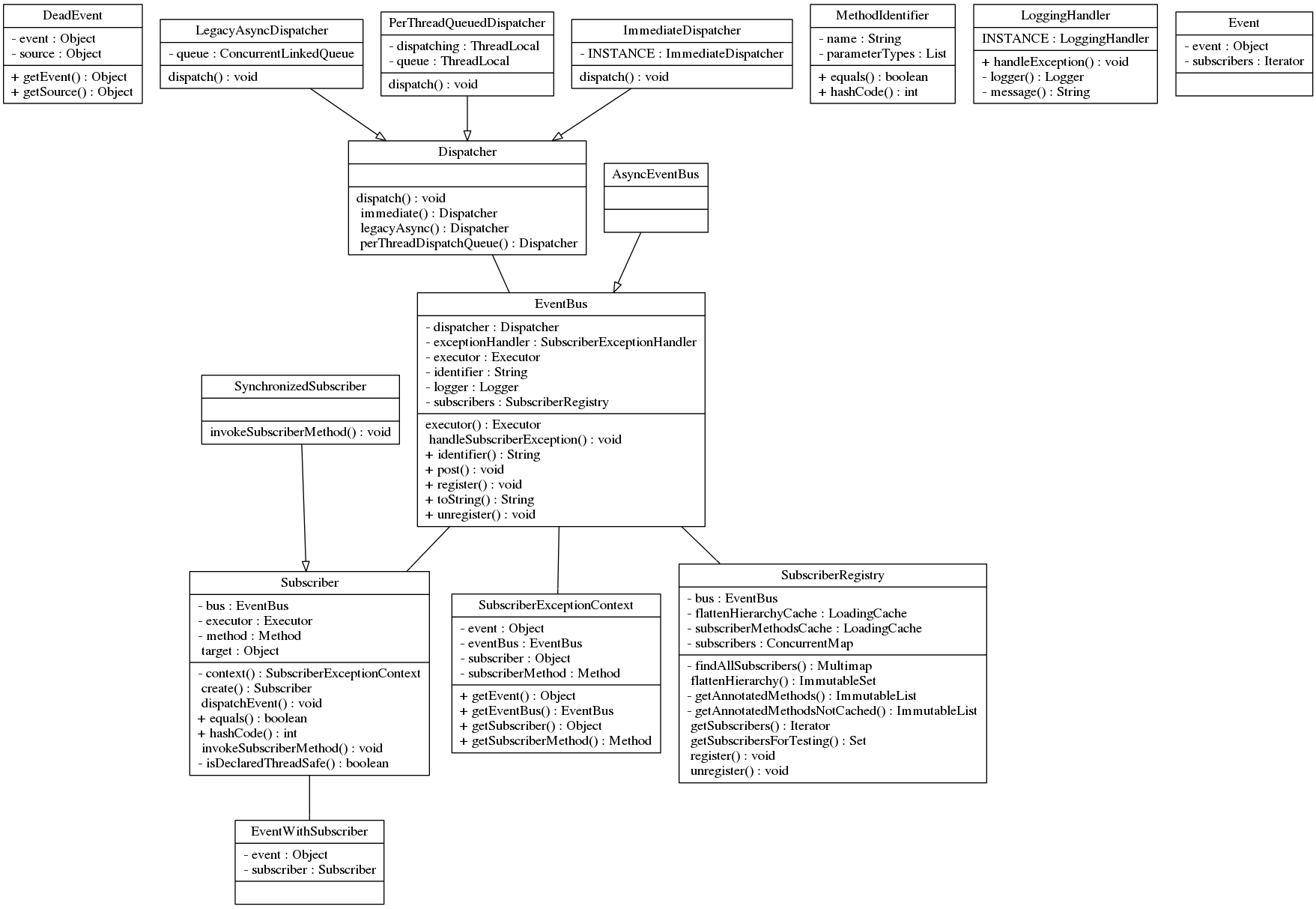Generates UML class diagrams, from source code
Command line tool to convert from a Exuberant-ctags tags file to a UML class diagram, through Graphviz, for all object oriented languages supported by ctags
The input file is a tags file, generated by Exuberant-ctags using --fields==+latinK.
The output file is a Graphviz DOT file whose name is specified through the program options, or to stdout. The DOT file should then be passed to the Graphviz dot program to be converted into an image file (e.g. PNG, SVG etc.).
Windows and Linux binaries can be downloaded at tags2uml@SourceForge. The instructions on how to build from source code can be found below.
So far, it has been tested on Linux and Windows 7. It has been tested on C++, Java, Python and C# source code. Work in progress. But it should theoritically work on other object oriented languages supported by ctags and on other platforms supported by Go.
- Supports C++, Java, Python, Ruby and C# (not all tested yet)
- Can build and run on any platform supported by Go i.e. Windows, Linux, Mac (Mac not yet tested)
- Whitebox (with methods and members of classes) or blackbox (just class names)
- Ability to show only public methods, only public and protected methods, all methods or no methods
- Ability to show only public members, only public and protected members, all members or no members
- Class inheritance is optionally shown
- Relationship optionally shown, based on the data type of members of a class (only for C++, Java and C#)
- Data type of members and return types of methods of a class (only for C++, Java and C#)
The DOT file for this was generated using these options:
tags2uml --members=1 --methods=1 --infile tags --outfile guava-eventbus.dot.
This is a whitebox UML class diagram of the Google Guava EventBus, which is set to show all members and methods as well as have inheritance and relationship enabled. This was the input tags file that was used and this was the output DOT file that was generated using tags2uml.
First, install the Go toolchain.
Please see these instructions on how to setup the src, pkg and bin directories. The tags2uml repository should be below src
The GOPATH environment variable also needs to be setup according to these instructions to point to the root directory of the Go projects like this: export GOPATH=$HOME/goprojects in Linux, or set GOPATH=c:/goprojects in Windows.
Then, run these commands to clone the git repository and then build the source code:
git clone https://github.com/ruben2020/tags2uml.git $GOPATH/src/tags2uml
go install tags2umlAfter doing the above, the executable binary tags2uml should appear in $GOPATH/bin in Linux. In Windows, the tags2uml.exe executable binary should appear in c:\goprojects\bin.
In order to use it directly, you could add it to PATH like this: export PATH=$PATH:$GOPATH/bin in Linux, or set PATH=%PATH%;c:\goprojects\bin in Windows.
In Windows, you may also want to set the GOROOT environment variable like this: set GOROOT=C:/go to point to the Go tools installation path, and add Go to PATH like this: set PATH=%PATH%;c:\go. The method to set the environment variables permanently in Windows can be found here.
The method to set the environment variables permanently in Linux is to place the above export commands into the ~/.bashrc file.
There are no build dependencies, but to use it, you would also need Exuberant-ctags and Graphviz.
To get more information on how to use this tool, please use tags2uml --help.
Basic use with default options (with automatic selection of files to be scanned):
cd ~/MySourceCode
ctags --fields=+latinK -R
tags2uml --infile tags --outfile MySourceCode.dot
dot -Tpng -oMySourceCode.png MySourceCode.dotIf you want to manually build a list of files to be scanned in Linux:
cd ~/MySourceCode
find -iname "*.java" > ./myfiles.txt
ctags --fields=+latinK -L ./myfiles.txt
tags2uml --infile tags --outfile MySourceCode.dot
dot -Tpng -oMySourceCode.png MySourceCode.dotIf you want to manually build a list of files to be scanned in Windows:
cd c:\MySourceCode
dir /b/a/s *.java > myfiles.txt
ctags --fields=+latinK -L myfiles.txt
tags2uml --infile tags --outfile MySourceCode.dot
dot -Tpng -oMySourceCode.png MySourceCode.dot
Replace *.java with relevant extensions.
You may also want to edit myfiles.txt to exclude files that you do not wish to be scanned.
It's free open source software.
It is licensed under the Apache License 2.0.
All DOT files generated using this tool are not subject to this license.
Yes. However, donations are welcomed.
For C++, inline assembly code is not supported by ctags. This mainly affects embedded software, OS and driver code.
Please exclude files with inline assembly code from the list of files to be scanned by ctags.
- Report bugs
- Provide feedback, new ideas, suggestions etc. What would you like to see?
- Tell your friends, propose it on StackOverflow, write about it, tweet it
- Fix bugs (see Issues tab)
ruben2020
(More welcomed)
We thank the people behind the following projects:
Exuberant-ctags
Graphviz
Go

